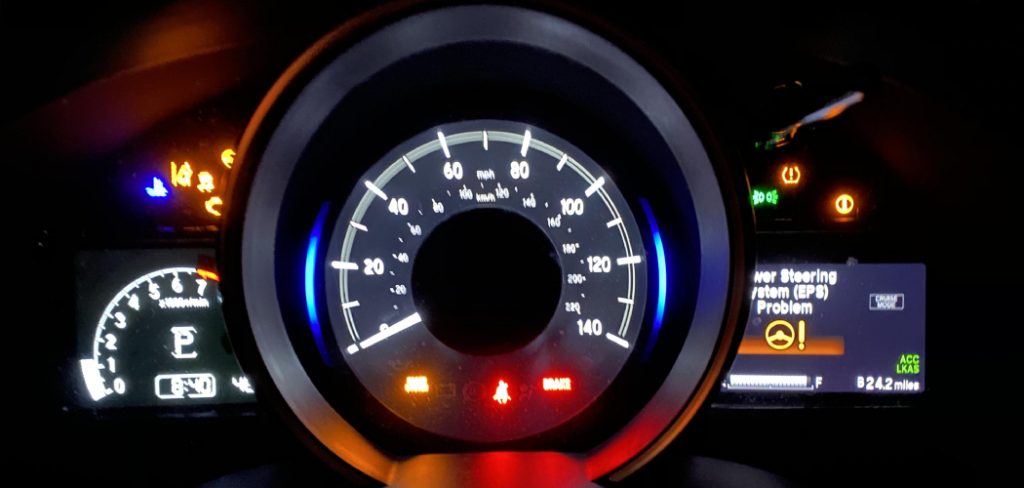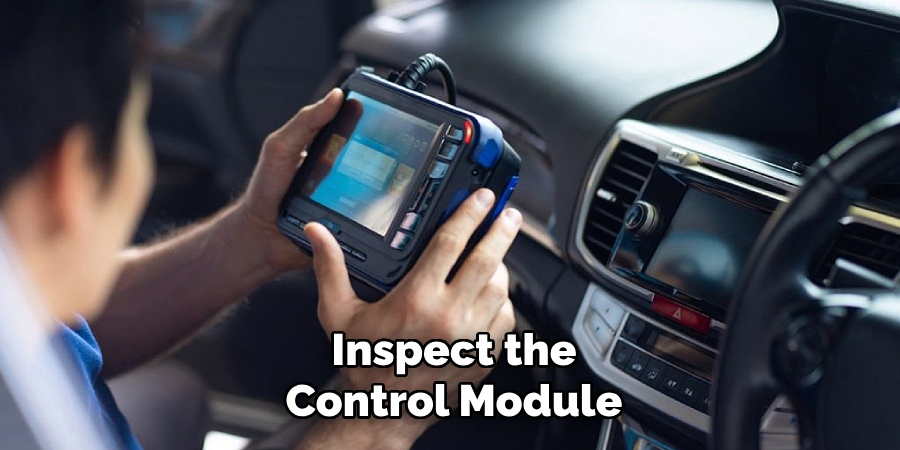When your vehicle’s service safety restraint system warning light illuminates on the dashboard, it’s essential to address the issue promptly.

The safety restraint system, commonly known as the airbag system, plays a critical role in protecting passengers during collisions. Ignoring this warning could compromise the effectiveness of your vehicle’s safety features, endangering the occupants in the event of an accident.
This guide on how to fix service safety restraint system will walk you through the necessary steps to diagnose and fix common problems associated with the safety restraint system, ensuring your vehicle remains safe for all passengers.
Why Might the Service Safety Restraint System Warning Light Come On?
The service safety restraint system warning light can be triggered by a variety of issues, ranging from minor to complex problems.
One common cause is a faulty sensor or wiring issue, which can lead to a disruption in communication between the vehicle’s components and the control module. Moisture or corrosion in the connectors and cables can also prompt the warning light to activate.
Additionally, if any part of the airbag system is damaged or has experienced a malfunction—whether the airbags themselves, the control unit, or pretensioner—this can result in the warning light illuminating.
It’s also important to note that low battery voltage may interfere with the system’s sensors, falsely triggering the alert. Proper diagnosis is essential to identify the root cause and address any potential safety concerns effectively.
Needed Materials:
To effectively address and resolve issues with the safety restraint system, gather the following materials and tools before starting:
OBD-II Scanner:
This diagnostic tool is essential for reading fault codes from the vehicle’s control module, helping to identify specific issues within the safety restraint system. If you don’t have access to an OBD-II scanner, most auto parts stores offer free code reading services or provide rental tools for a minimal fee.
Screwdrivers and Pliers:
These basic hand tools will come in handy for accessing various components of the safety restraint system, such as the control module and airbag connections.
Multimeter:
This tool is crucial for testing wires and electrical connections within the system. It can help determine if there is any damage or disruption in the circuit.
Replacement Parts:
Depending on the diagnosis, you may need to replace certain components of the safety restraint system. Ensure that you have the necessary replacement parts on hand before starting the repair process.

8 Step-by-step Guides on How to Fix Service Safety Restraint System:
Step 1: Identify the Fault Code
Start by turning off your vehicle’s ignition and locating the OBD-II port, usually found beneath the dashboard on the driver’s side. Connect your OBD-II scanner to the port and turn your vehicle’s ignition to the “ON” position without starting the engine.
Follow the instructions on your scanner to read the fault codes stored in the vehicle’s control module. These codes will provide specific information about the malfunction within the safety restraint system.
Once you have identified and noted the fault code, refer to your vehicle’s service manual or the scanner’s guide to understand the meaning of the code, as this will help guide your subsequent troubleshooting steps.
Step 2: Check the Battery Voltage
Before delving further into system diagnostics, it’s important to ensure your vehicle’s battery is operating at the correct voltage. Begin by turning off all vehicle accessories, ensuring the car is off and parked in a safe area.
Use a multimeter to measure the battery voltage; you should see a reading between 12.4 to 12.7 volts for a fully charged battery. If the voltage is significantly lower, it may be affecting the safety restraint system’s sensors and triggering the warning light.
A low battery should be charged or replaced before proceeding with additional diagnostics. By ensuring the battery is at proper voltage, you eliminate one potential source of error and ensure more accurate diagnostics as you continue through the troubleshooting process.
Step 3: Check the Airbag Connections
The service safety restraint system warning light can also be triggered by loose or damaged connections between the airbags and the control module.
Start by disconnecting your vehicle’s battery and waiting for at least 10 minutes to allow any residual voltage to dissipate – this is an essential safety precaution when working with airbags.
Next, refer to your vehicle’s service manual to locate the airbag connections and their corresponding colors. Use a multimeter set to measure resistance (ohms) and test each connection; ideally, you should see a reading of less than one ohm.
Any higher reading could indicate a problem with the connection, which may need to be cleaned or replaced. It’s also important to ensure there are no bent pins or damaged wires within the connections.
Step 4: Inspect the Control Module

The control module is a critical component of the safety restraint system, responsible for receiving and processing information from various sensors and deploying the airbags during an accident. If your scanner indicates a fault with the control module, it may need to be replaced entirely.
However, before purchasing a new one, it’s essential to check for any loose connections or visible damage to the existing module. If you need to remove and replace the control module, ensure that you follow all safety precautions outlined in your vehicle’s service manual to avoid accidental airbag deployment.
Step 5: Check the Pretensioners
Pretensioners are responsible for tightening the seatbelt in the event of an accident, keeping occupants securely in their seats. A malfunctioning pretensioner can also trigger the service safety restraint system warning light.
To check them, you will need to locate and access the pretensioner on each seat (usually located near the buckle).
Use a multimeter set to measure resistance to test each connection; ideally, you should see a reading of less than one ohm. Any higher reading could indicate a problem with the pretensioners and may need replacement.
Step 6: Test Sensors and Wiring
A damaged or malfunctioning sensor can also cause the safety restraint system warning light to turn on. Use your multimeter set to measure voltage (volts) and test each sensor’s wiring for proper voltage output.
Refer to your vehicle’s service manual for specific voltage readings, as they may vary depending on the make and model of your car. If you are getting low or no voltage readings, check for any damage within the wiring and repair or replace as needed.
If the wiring appears to be intact, it may be an issue with the sensor itself, which will need replacement.

Step 7: Check Impact Sensors
In some cases, a faulty impact sensor can trigger the service safety restraint system warning light. Impact sensors are responsible for detecting sudden deceleration or impact and sending a signal to the control module to deploy the airbags.
Depending on your vehicle’s make and model, these sensors may be located in various places, such as near the front bumper or within the doors.
Use a multimeter set to measure resistance to test each sensor’s connection; ideally, you should see a reading of less than one ohm. Any higher reading could indicate a problem with the sensor and may need replacement.
Step 8: Clear Fault Codes
Once you have completed all necessary repairs and replacements, reconnect your vehicle’s battery and use your scanner to clear any fault codes that were previously stored in the control module. If the problem has been successfully resolved, the service safety restraint system warning light should no longer be illuminated.
If the light continues to stay on, it may indicate an underlying issue that requires further diagnostics or professional assistance from a mechanic or dealership.
Following these steps on how to fix service safety restraint system can help you troubleshoot and resolve common issues with the service safety restraint system warning light.
However, it’s always essential to exercise caution and follow proper safety precautions when working on your vehicle’s airbag system. If you are unsure or uncomfortable with any of the steps outlined above, it is best to seek professional assistance for a thorough diagnosis and repair.
Frequently Asked Questions:
Q: Can I Drive My Car With the Service Safety Restraint System Warning Light on?
A: It is not recommended to drive your vehicle with the service safety restraint system warning light on, as it indicates a potential issue with the airbag system.
Driving without functional airbags can put you and your passengers at risk in the event of an accident. It is best to address and resolve the issue before driving your car again.
Q: Does Fixing the Service Safety Restraint System Warning Light Require Special Tools?
A: While some basic automotive tools such as a multimeter, may be necessary, fixing the service safety restraint system warning light does not typically require any special tools.
However, it is essential to follow proper safety precautions and refer to your vehicle’s service manual for specific instructions related to your make and model.
Q: Can I Reset or Turn off the Service Safety Restraint System Warning Light on My Own?
A: If you have resolved the issue causing the warning light to turn on, you can use a scanner or code reader to clear any fault codes stored in the control module. However, if the light continues to stay on after clearing the codes, it may indicate an underlying issue that requires further diagnosis and repair.
Q: What Should I Do If My Airbags Deployed Without Me Being in an Accident?
A: If your airbags deployed unexpectedly without being involved in a collision, it could signal a malfunction within the safety restraint system. It is best to seek professional assistance immediately for proper diagnosis and repair before driving your vehicle again.

Conclusion:
Ensuring the proper functioning of your vehicle’s service safety restraint system is crucial for your safety and that of your passengers.
By carefully following the diagnostic steps on how to fix service safety restraint system provided, you can effectively troubleshoot and rectify common issues that trigger the warning light. However, always prioritize safety and adhere to your vehicle’s service manual for guidance.
When in doubt, seeking help from a qualified mechanic or dealership can provide peace of mind and ensure that your airbag system is in optimal condition. Addressing these concerns promptly not only averts potential risks but also restores confidence in your vehicle’s safety features.
